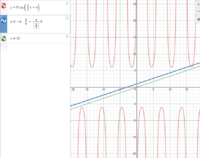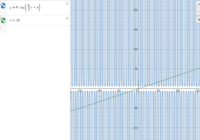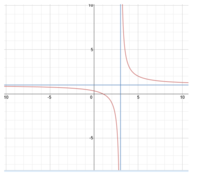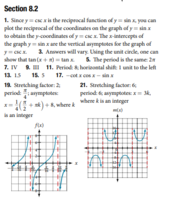xxMsJojoxx
Junior Member
- Joined
- Oct 6, 2020
- Messages
- 54
In trying to figure out the vertical asymptote for an equation, for example View attachment 22491, we were given this information about the vertical asymptote:
What is k? This variable is not in the generic formula y=Acsc(Bx-C)+D.
Thank you.
How do I isolate go get k, to plug in to the equation to get the vertical asymptote?[MATH]y=6\csc\left(\dfrac{\pi}{3} x + \pi\right)[/MATH] is undefined where
[MATH]\dfrac{\pi}{3} x + \pi = k \pi \text{ where } k \in \mathbb{Z}[/MATH]


Thank you, Dr. Peterson. I understand the graph in your example x=-3+3k.As they say, k can be any integer. For example, if you find that x = -3 + 3k, this means that there are asymptotes at:
x = -3 + 3(0) = -3x = -3 + 3(1) = 0x = -3 + 3(2) = 3...
as well as
x = -3 + 3(-1) = -6x = -3 + 3(-2) = -9...
Do you understand? And do you see the asymptotes at these locations on your graph?
 .
.
 . How can it be the asymptote then?
. How can it be the asymptote then?
The equation x = 3k is not a line to be graphed on the xy-plane at all, much less an asymptote. The variable k is not y! (I didn't know Desmos was capable of making that mistake, graphing x = 3y when you enter x = 3k.)
I listed some of the asymptotes: x = 0, x = 3, x = 6, ... . These are all vertical lines, each obtained by taking a different integer value for k.
(Also, where did you get that equation x = 3k? The equation I used, x = -3 + 3k, is the one obtained from the formula you quoted.)


